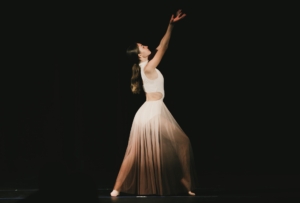What Is Contemporary Dance?
Contemporary dance is a genre of dance performance that developed during the mid-twentieth century and has since grown to become one of the dominant genres for formally trained dancers throughout the world, with particularly strong popularity in the U.S. and Europe.
_____________________________________________________________________________________________
The genre of Contemporary blends elements of multiple dance styles. This form of dance lets dancers express emotions through movement and breath.
Contemporary dance is a style of interpretive dance that embraces blending improv, innovation, and technique from various styles of dance such as; jazz, modern, lyrical, and classical ballet.
Within this genre you focus more on floor work, body shapes, and expression. Instead of relying on the strict rules that govern traditional dance styles it RELIES on your ability to move through improvisation and versatility. It allows you to have creative freedom with your movement. The fluidity of movement allows dancers to explore their mind-body connection.
It is often referred to as a form of story-telling. Contemporary routines tend to communicate abstract ideas, moments in time, personal or historical moments. The costumes and music will typically reflect and help set the tone of the piece. Some choreographers will have their performers dance to spoken word poems, or have the dance/dancer make “music” with their bodies.
Major power houses who helped influence contemporary included:
✨Isadora Duncan, who was an American ballet dancer that rejected the rigid technique of classical ballet to embrace the human bodies natural lines.
✨Martha Graham was a choreographer known for being the mother of modern dance. Her innovation laid much of the ground for contemporary movement.
✨Lester Horton was an American choreographer who helped developed modern dance techniques inspired by Native American dances. He was also one of the first American choreographers to insist on racial integration in his performances. His legacy lives on in the work of notable contemporary choreographers including Alvin Ailey.
There are many factors, styles, and innovators who have made contemporary what it is today! This style is forever growing, and has the ability to reflect the times in a way of art movement.


